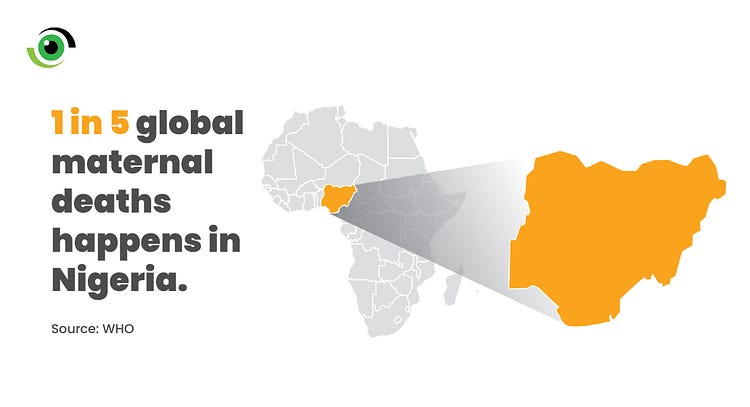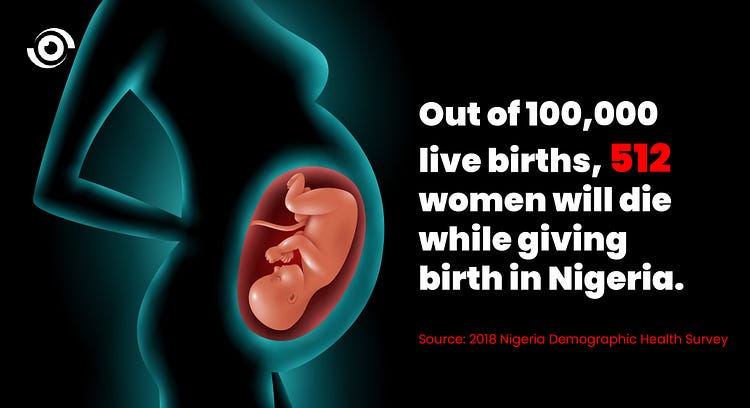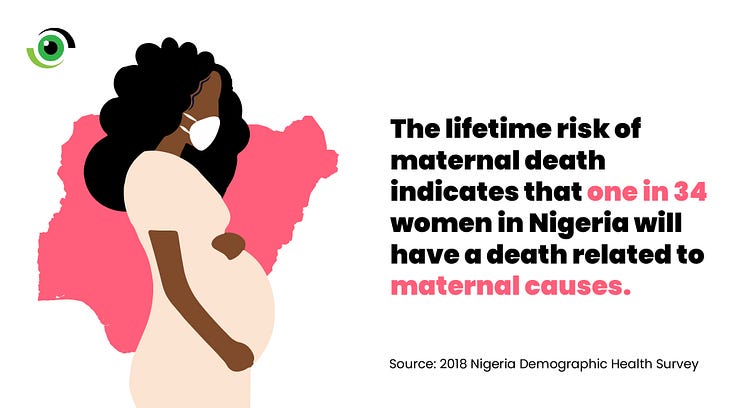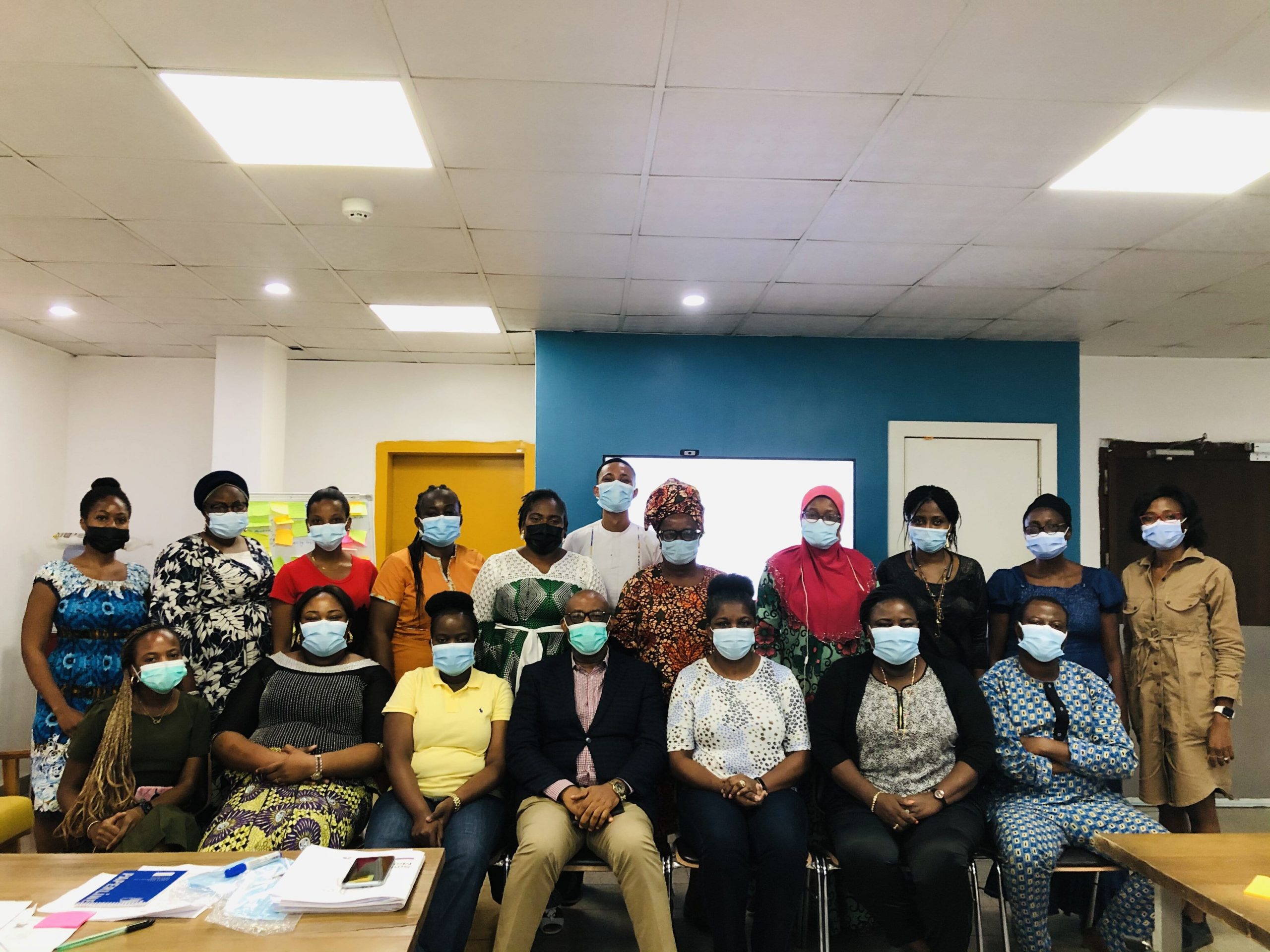About one in every five global maternal deaths happens in Nigeria. Improving maternal health outcomes must remain a key priority that generates urgent policy action. According to the 2018 Nigeria Demographic Health Survey (NDHS), out of 100,000 live birth, 512 women will die while giving birth. In the same survey, findings suggest that the lifetime risk of maternal deaths indicates that one in 34 women in Nigeria will have a death related to maternal causes. The underlying causes of the high maternal mortality rate are multi-faceted including the inequalities in access to healthcare in a country.

Findings from a community-based maternal death review titled ‘Why Are Women Dying While Giving Birth in Nigeria?’ found that the leading causes of maternal mortality in Nigeria were postpartum haemorrhage (PPH), prolonged obstructed labour, complications arising from abortion, ruptured ectopic pregnancy and infections from fever, with postpartum haemorrhage recorded as the leading cause of maternal deaths in the communities surveyed. Many of these maternal deaths are avoidable.
Different government interventions have been initiated to address the challenge. In July 2017, the Minister of Health inaugurated a 34-person Task Force to accelerate the reduction in maternal deaths in Nigeria, acknowledging postpartum haemorrhage as the leading cause of maternal deaths. Then in April 2019, the National Primary Health Care Development Agency (NPHCDA) inaugurated the National Emergency Maternal and Child Health Intervention Centre (NEMCHIC) in a bid to improve awareness and community involvement to reduce maternal and child mortality.

Co-creating Public Health Innovations to Reduce Postpartum Haemorrhage
Smiles for Mothers, a consortium working to reduce maternal deaths caused by postpartum haemorrhage by 20% by 2022, are applying a human-centred design (HCD) approach that puts the people for whom the solution is being designed for, at the centre of the design process. The consortium is providing support to the Federal Ministry of Health (FMoH), working in Kano, Lagos, and Niger States, the programme’s three pilot states.
The Smiles for Mothers consortium consisting of Solina Center for International Development and Research (SCIDaR), Clinton Health Access Initiative (CHAI), and Co-Creation Hub (CcHUB) is focusing on developing innovations as a means to reduce postpartum haemorrhage. The consortium is adapting to get dividends by rolling out the updated 2018 WHO recommendations on uterotonics for the prevention of postpartum haemorrhage. The WHO recommendations are summarised in these guidelines:
- Uterotonics for the prevention of postpartum haemorrhage
- Advance misoprostol distribution to pregnant women for prevention of postpartum haemorrhage (2020)
- Routes of oxytocin administration for the prevention of postpartum haemorrhage after vaginal birth
These recommendations seek to improve the quality of care for women giving birth, as they relate to PPH and its complications. Smiles for Mothers is taking three pathways to innovation:
- Designing and implementing costed roadmaps for the adoption and roll-out of uterotonics for the prevention of postpartum haemorrhage.
- Improvement in clinical care and appropriate use of uterotonics for PPH management.
- Supply chain strengthening and optimization for uterotonics in the state

In April 2021, the Smiles for Mothers programme trained selected stakeholders in the three program states on the value of HCD and its role in improving public health outcomes, using a combination of field activities and in-class training sessions. The training participants, now referred to as HCD Champions, included representatives from the Directorates of Public Health, Pharmaceutical Services, Nursing Services, Maternal and Child Health Departments across the State Ministries of Health and its parastatals. The outcome of the meeting was an essential understanding of how to apply HCD when designing public health interventions. The Smiles for Mothers team will continue to work with the HCD Champions throughout the programme to ensure that all champions fully understand how to apply HCD in designing public health interventions.
Human-centered Design: An Interactive Problem-solving Approach for Maternal Health Interventions
On the 29th of July 2021, Smiles for Mothers, in collaboration with Nigeria Health Watch, organised a webinar that included delegates from healthcare, academia, development and the public sector to discuss how HCD can be used as an interactive problem-solving approach for public health interventions. The virtual meeting provided a platform for Smiles for Mothers to introduce HCD as a practicable and approachable tool that could help solve the seemingly endless array of public health challenges in Nigeria, including maternal deaths. Delegates gained insights into the work that Smiles for Mothers is doing in reducing the number of maternal deaths caused by postpartum haemorrhage.

According to Dr. Temi Filani, Practice Lead — Design for Health at CcHUB and HCD Lead for the Smiles for Mothers programme, “Maternal mortality is a perennial public health challenge that Nigeria has continued to face, and despite the efforts put into creating plans and interventions to solve the challenge, we continue to see only minimal decrease in maternal mortality numbers.” For the Smiles for Mothers team, the collective participation involved in developing a solution, allows the team to think through the problem, having a clear understanding of the issues and challenges within that context. Together with stakeholders and expected end users involved in developing the solution, it is expected that any solution created will address the targeted issue. Getting input from the women, health care workers, policymakers and everyone within the maternal health care value chain makes HCD unique in its value. Another key element of the HCD approach is that it is an equitable way to address challenges, where the contribution of every stakeholder is recorded and is of equal importance to other stakeholders.
Commenting on the approach, Hajiya Rakiya Sule Tahir, a HCD Champion from Kano State said, “when the program started, we were scared. After learning more about the approach, we realised that it is a simple way to create meaningful solutions because it is centered on the patient, in the case of maternal health care, the woman.” Discussing their work as HCD Champions, she said, “After the workshop, we were able to gather ourselves as Champions and used four tools to go to the communities to access how the community perceives the concept of a reduction in postpartum haemorrhage”. The HCD Champions went to health facilities and observed the protocol in the management of postpartum haemorrhage. In one primary healthcare (PHC) centre, the Champions interviewed women that suffered from postpartum haemorrhage and recorded how long it took for them to be treated. They conducted a focused group discussion with women who visited the clinic asking them if they had suffered from postpartum haemorrhage. Results revealed that the PHC recorded only a few cases of postpartum haemorrhage because uterotonics were available when needed. There was however the challenge of home deliveries, where women who suffer from postpartum haemorrhage did not have access to lifesaving uterotonics that would otherwise have saved their lives.

Innovating for the Future of Maternal Health Care Solutions in Nigeria
HCD has the potential to revolutionise how we solve public health challenges including the high rate of maternal deaths in Nigeria. A similar approach was used in designing the Adolescent 360 programme, aimed at improving the sexual and reproductive health of adolescent girls aged 15 -19 years. HCD can cause a sharp shift in the efficacy of solutions being designed and implemented because of its all-inclusive approach. In the past, public health solutions were designed with input mainly from healthcare workers. It is time to accommodate and incorporate the views of the end users, the patients, the pregnant women and women in postpartum, as they are the group that will benefit from the valuable and sustainable solutions to the most pressing problems.
Human-centered Design should be embedded in sustaining maternal health programs, and not as one-off additions in the conceptualisation as this ensures that at every stage of the maternal health care value chain, and at every stage of implementation, the end user — the mother — is adequately and appropriately provided with the quality health services she needs to survive giving birth in Nigeria.



1 Comment